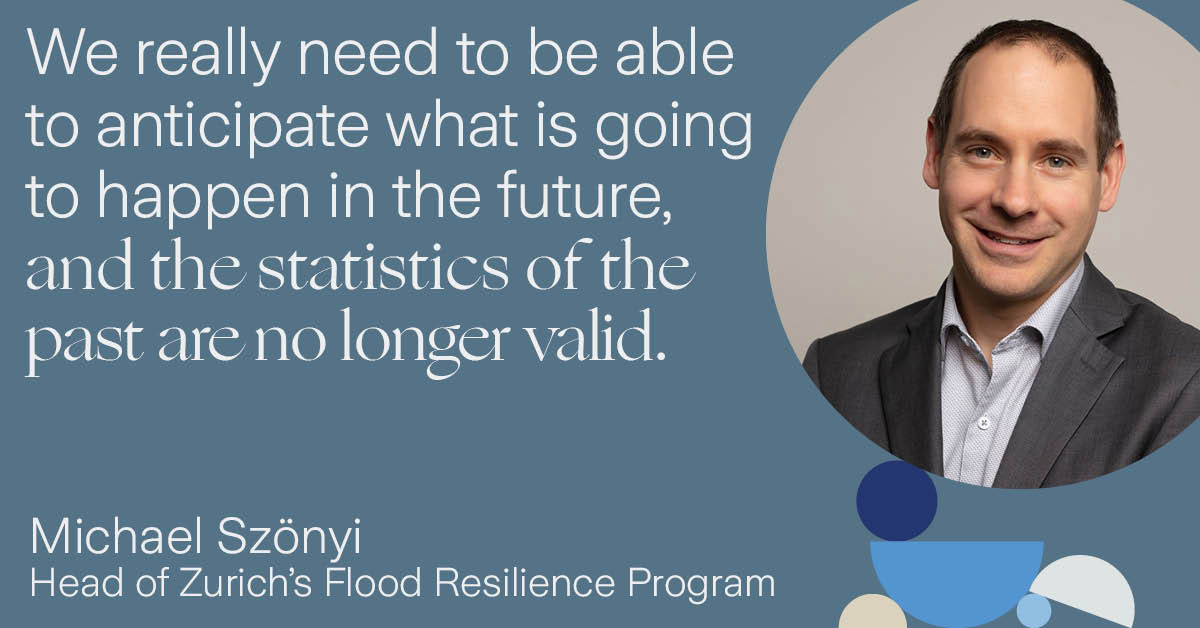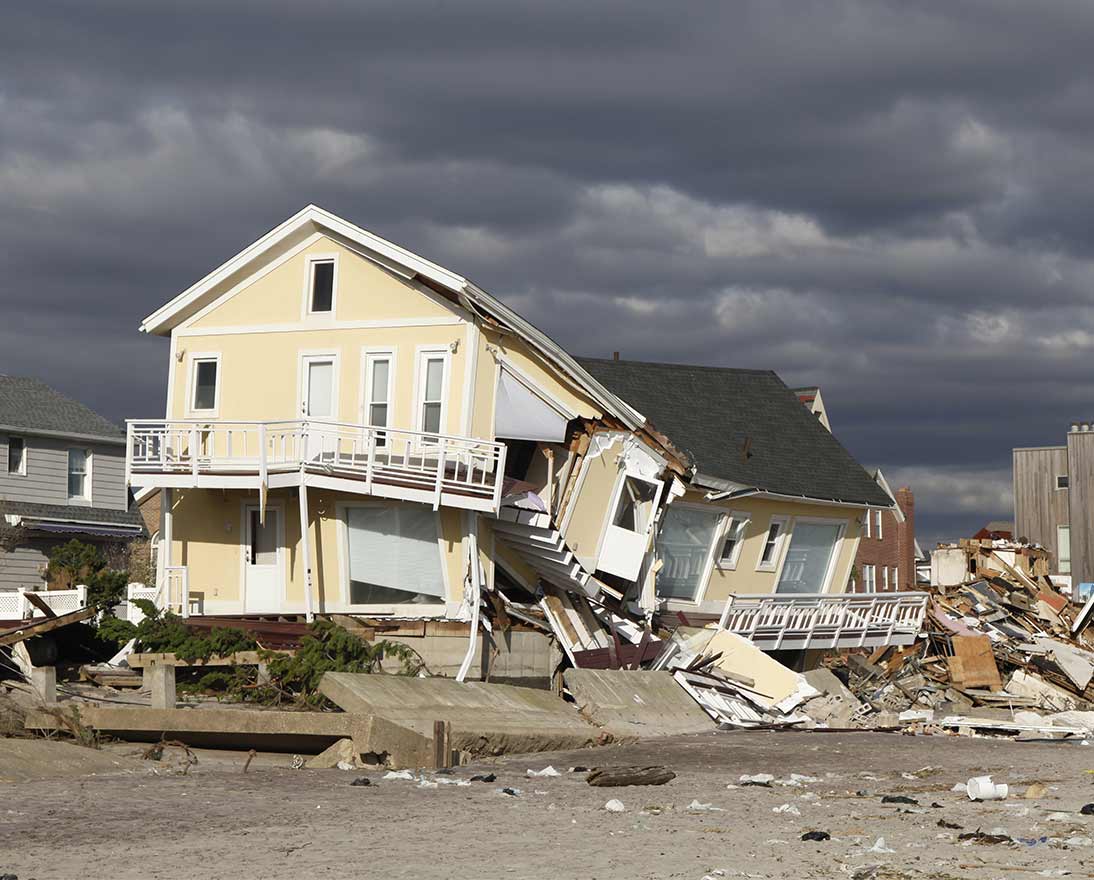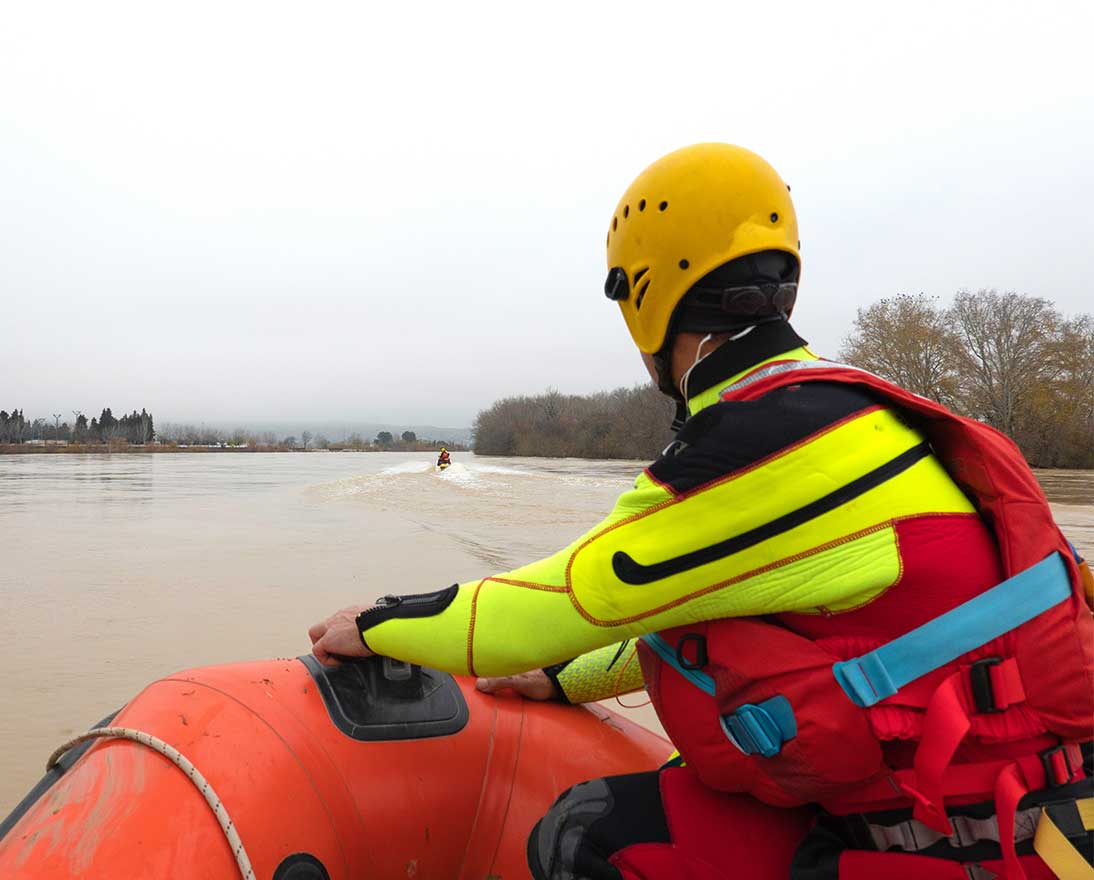Adapting to change – building resilience to extreme weather
Climate resilienceArticleSeptember 20, 20225 min read
Floods, drought and wildfires from global warming are taking an increasing toll on societies and the global economy. Open-source data, climate risk models and innovation can help society adapt.
As the need to mobilize ever-greater resources to combat climate change grows, one inescapable fact looms large: even if global warming can be confined to just 1.5C above pre-industrial levels, companies, organizations and governments everywhere must develop strategies to protect communities and be resilient enough to resist extreme weather events.
With wildfires near the Chinese city of Chongqing, heatwaves across Europe, floods in Pakistan and tornadoes in the U.S., adaptation to extreme weather events will be a priority issue at November’s COP 27 climate meeting in Sharm El-Sheikh.
But what does climate adaptation mean in practice? And what role can insurers play in helping companies and organizations reduce risk and build resilience?
Last year, extreme weather events cost the global economy USD 329 billion. Meanwhile, during the 15 years to 2015, the global population at risk of flooding increased by 20-24 per cent.

“Climate change is here,” says Michael Szönyi, Flood Resilience Program Lead at Zurich Insurance Group (Zurich). “The effects and consequences are not something for the distant future; they are a reality, and they are happening now.”
For Szönyi, climate adaptation means examining a company’s entire value chain – the flow of goods but also of services in the form of employees and the labor they supply – to identify the biggest vulnerabilities. It also means looking much further into the future and basing today’s decisions on likely changes in tomorrow’s weather patterns, rather than basing calculations on past records.
One example is new building projects. Szönyi says that an early investment equivalent to just 1 percent of the project cost can prepare an office or production facility for future weather events. “It’s important to do it right at the project design stage because the buildings we are designing today will still be standing in 2050,” he says. “If you have to start retrofitting, it is a missed opportunity.”
Ruben Torres Rico, EMEA Lead at Climate Resilience, Zurich Resilience Solutions, argues that the insurance industry has a defining role to play in climate adaptation, helping to protect against future climate-related risk and to quantify the impact accordingly.

One opportunity for making that easier is open-source climate hazard data. Information on physical risks – everything from hazard intensity and frequency, risk location exposure and the vulnerability of specific assets – can contribute to a more accurate picture of risk, so that assets can continue to be insured. Yet, much of that valuable data today is either not readily available, unstandardized, or both.
According to Torres Rico, greater collaboration with policymakers towards an open-source database of standardized, publicly available data (while respecting data protection regulations) could unlock huge potential. “Having more data means being able to develop more accurate tools,” he says. “It also helps to raise awareness of the need for climate adaptation.”
A second opportunity is to develop better climate risk models, which can help form a more accurate picture of future weather patterns as well as the risks they might pose to companies, organizations and communities. “We really need to be able to anticipate what is going to happen, and the statistics of the past are no longer valid,” says Szönyi. “We want to understand what the hazard conditions are going to be in 2050, and that is where climate models come into play.”
More accurate risk data and modelling would also help inform policymakers on hazards, exposures and vulnerabilities within their countries, providing them with greater insight on adaptation issues such as prevention, risk reduction and preparedness.

The insurance industry can support the increase of risk awareness and understanding in a cost-effective manner by bringing in their risk-modelling expertise and promoting the use of open data standards. For example, the Insurance Development Forum (IDF) in partnership with V20 Group of Ministers of Finance, through the Global Risk Modelling Alliance, has given countries access to open data and risk-modelling platforms as well as risk finance expertise to enable the co-development of risk-management strategies and adaptation plans.
A third opportunity lies in innovation. Digitalization, including Big Data and machine learning algorithms, has the potential to increase the impact of risk finance and insurance on resilience.
In April, and as part of ongoing efforts to spur innovation through collaboration, Zurich picked 12 start-ups that it will work with to develop ideas in four categories: insurance reimagined; prevention and mitigation; simplicity; and sustainability. The start-ups were selected from about 2,600 companies that participated in the insurer’s Zurich Innovation Championship, now in its third year.
Through a three-month acceleration phase, the idea is to work with the selected companies, offering financial and non-financial support to reach a point of implementation and then to scale their solutions globally.
Ultimately, says Torres Rico, successful climate adaptation involves both reducing the level of risk through prevention while ensuring resilience by limiting impact and ensuring quick recovery from disaster.
“These are concepts that go to the core of what we aim to do as insurers, and better data, modelling and innovation are the opportunities before us,” he says. “But we have to act now because climate change isn’t going to stop tomorrow even if everyone effectively implemented the requisite mitigation measures.”



